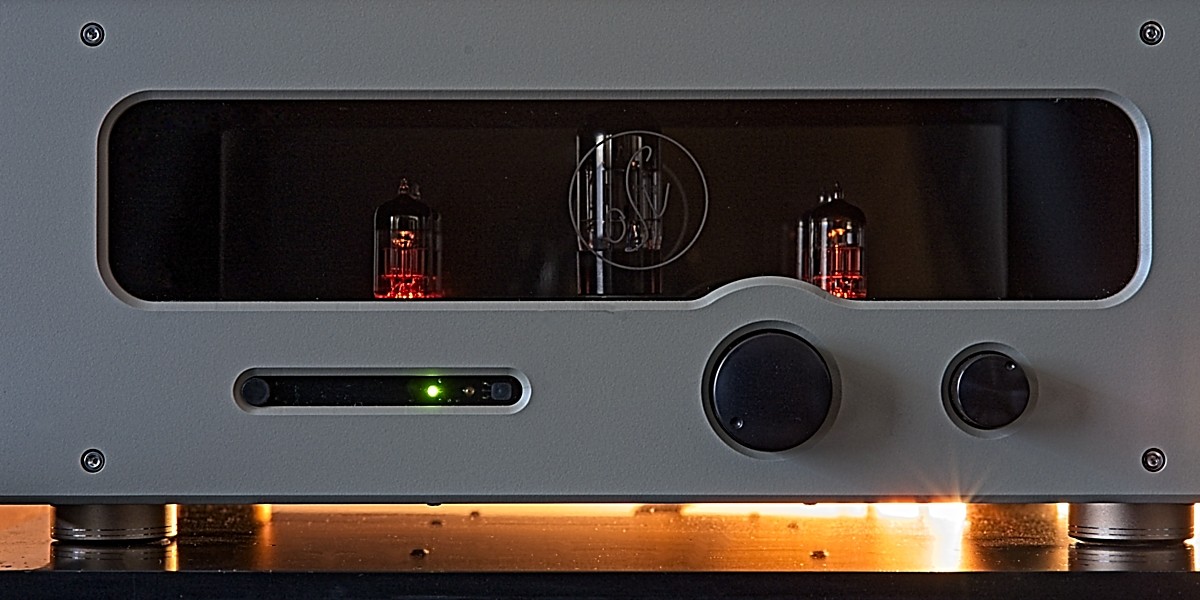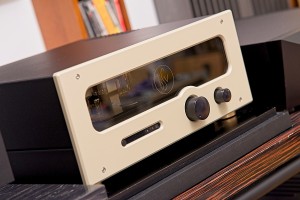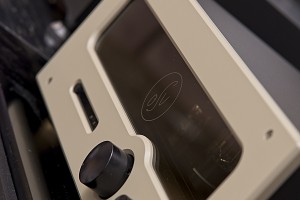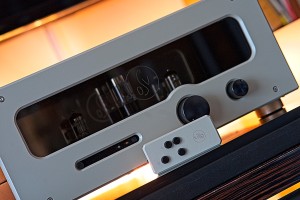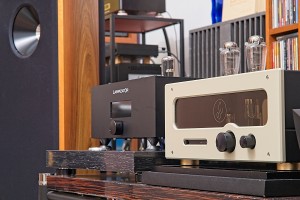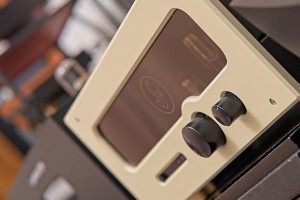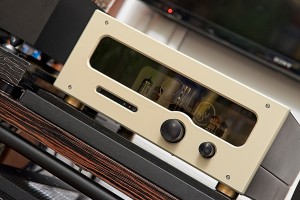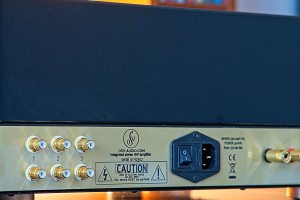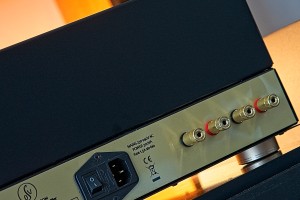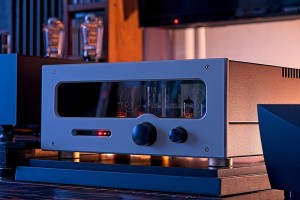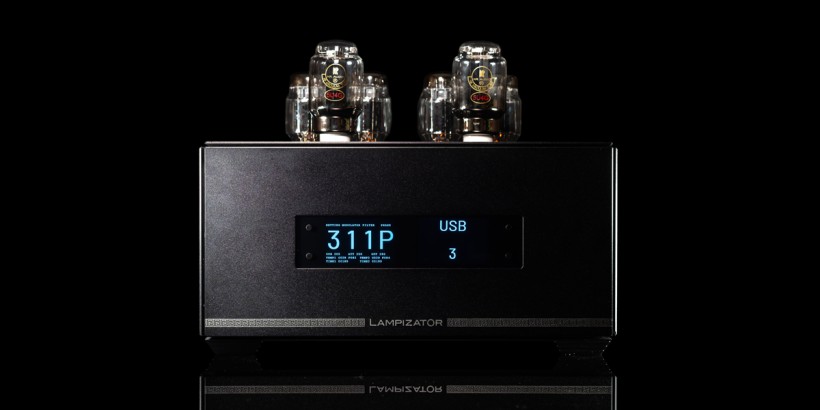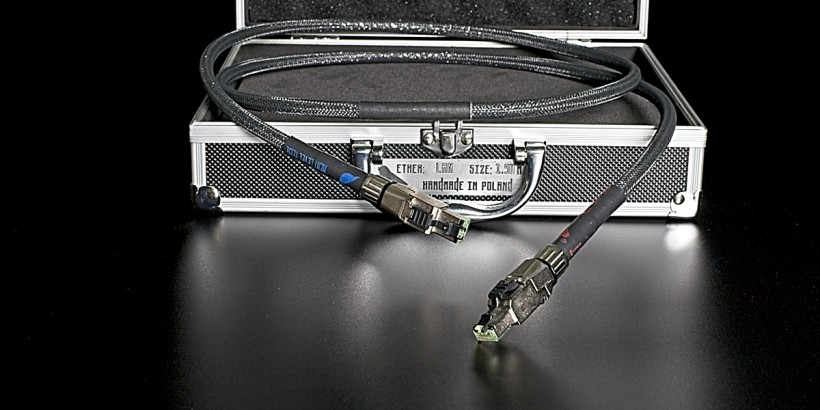Many audio brands develop products for both professional and home users. In most cases, they use the experience from both sides of the proverbial glass to make better products for those who make and listen to the music. The integrated amplifier I will introduce comes from such a ‘two-way’ manufacturer. Let me present OSV HT-50.
Introduction
An email from Mr. Szymon Pyzinski was one of those surprises that happen rarely but are always welcome. What kind of surprise am I talking about? Well, despite the fact that there are hundreds, maybe even thousands of audio brands just in the major ‘audio countries’ and it’s clear one can’t know them all, usually after being in this business long enough, there are only a very few names that don’t at least ring a bell. I mean, unless they are newcomers. The OSV Audio in question is, and at the same time, isn’t a newcomer, and until recently, it successfully avoided my attention. That’s why I had no clue what to expect, hence a welcome surprise.
Mr. Pyzinski explained that while he spends a lot of time in the UK, where we have a common friend, Mr. Greg Drygala, who is an audio distributor, OSV exhibited with locally, his company has been making hybrid amplifiers in Katowice, Poland, for a while now. That’s a familiar city in Southern Poland, only 25-30 km from my hometown, where I grew up and lived for 30 years, Gliwice. His partner, the designer of the OSV amplifiers, Mr. Daniel Sarna, also comes from this region of Poland.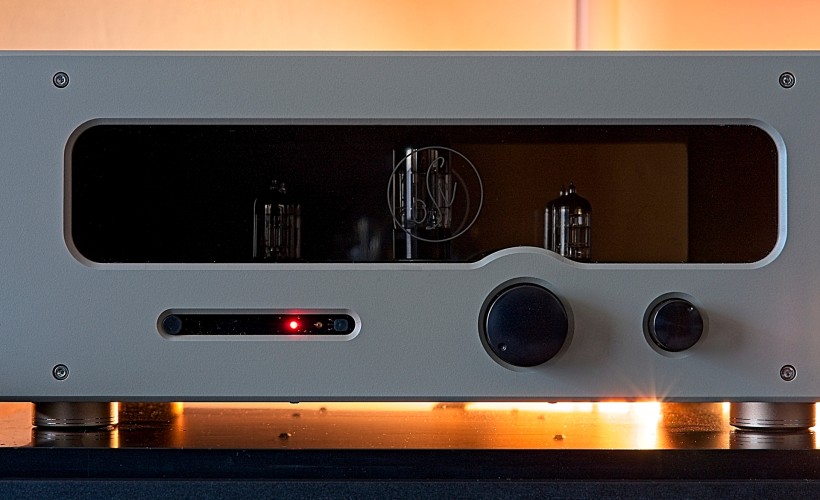
While researching the brand, I learned that both gentlemen are also musicians. In my experience, it is a very good sign when it comes to audio designers. Who better knows how music should sound than people who actually play it? Long story short, the reasons to welcome this review with open arms piled up as if I needed them to after the recommendation from Greg whose taste in sound I learned to trust.
As the name was new to me, I started looking for an explanation for the brand’s name. I found out that it is an abbreviation of a German term that translates into English as Upper Silesian Amplifiers (the city of Katowice is the capital of the region called Upper Silesia in Southern Poland). After finding that out, I visited their website to learn more, and instead of paraphrasing, let me quote from there how OSV Audio introduces itself in its own words:
„OSV Audio began in 2012, when its engineers in Katowice, Poland, started manufacturing amplifiers for the guitar market under the name JK Amplifiers. Over time, the brand became known among musicians as having some of the best-sounding guitar and bass gear. The Bass Player Magazine named the company “Gear Of The Year 2019”, beating out some of the world’s most established brands. At the same time, JK Amplifiers was producing Hi-Fi amplification, receiving rave reviews from private and retail clients. Today, as OSV Audio, we continue the tradition of offering one of the finest Hi-Fi gear to a diverse and competitive market.”
As you can see, it’s not such a newcomer to the market as I thought it to be. In my defense, I should point out that the name OSV Audio is relatively new, and for quite a while, still, as JK Amplifiers, they actually focused on guitar amplifiers, which are not my specialty (even if playing an electric guitar has been one of my unrealized dreams for years). Yet, I could swear that I’d heard the name before, just couldn’t figure out where or in what context. The next part I read on the website caught my eye, as I believe that all audio gear should be made to facilitate the best possible connection between the music and listeners:
At OSV, we take pride in crafting amplifiers that redefine simplicity and effortlessly deliver unparalleled audio quality. Our products are meticulously handmade in Poland, combining precision engineering with a passion for pure and crisp sound. We believe in the power of music to connect people, and our amplifiers are designed to enhance that connection. We set an ambitious goal for ourselves to create the best hybrid integrated amplifiers, ones that could compete with and sonically outperform other brands.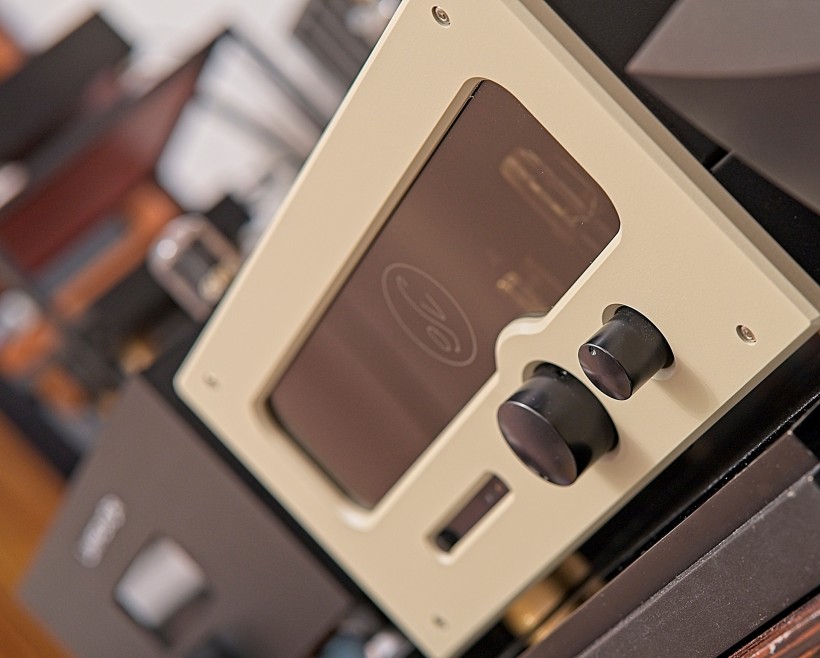
The goal, as you can probably agree, is ambitious but not impossible for people with enough knowledge, experience, and conviction. All I’d learned so far suggested that the company led by these two gentlemen could be up to the task. I was eager to start my assessment to confirm that assumption.
Design and Features
The amplifier comes safely packed in a double, quite heavy box. When it comes to tubes, a rule of thumb says that the heavier the device, the better. It is still true even if it is a hybrid design, where tubes and transistors operate hand in hand, which the OSV integrated under review is. Taken out of the box, HT-50 makes a good first impression. It’s quite a large, sturdy, simple (I like simple!) design. After a closer inspection, I had no doubts that it was well-made and nicely finished, and the aesthetics, while quite simple, differentiate it from most amplifiers available on the market today.
The thick aluminum front, which, as I learned, can be finished with any color from the RAL palette, and in this case was, depending on the light, really (and remember, I’m not good with colors), grey-ish, but sometimes it looked more gold-ish. Its characteristic feature is a large ‘window’ that allows designers to display the tubes in the input stage and share some of their warm glow with users. Below, there are two knobs, for volume control and input selection, and the narrow ‘slot’ on the left hides the stand-by button and power LED. When in stand-by mode LED is red, when you turn the device on, it flashes until the amplifier is ready for operation, and the LED turns green.
The rear panel is very simplistic as well. What you get at your disposal are three line inputs (RCA) and two pairs of speaker outputs. There is obviously also a power inlet (IEC type) accompanied by the main switch. No additional features, no built-in DAC, streamer, or phono stage. The only option, that will cost you one of the line inputs, is Bluetooth.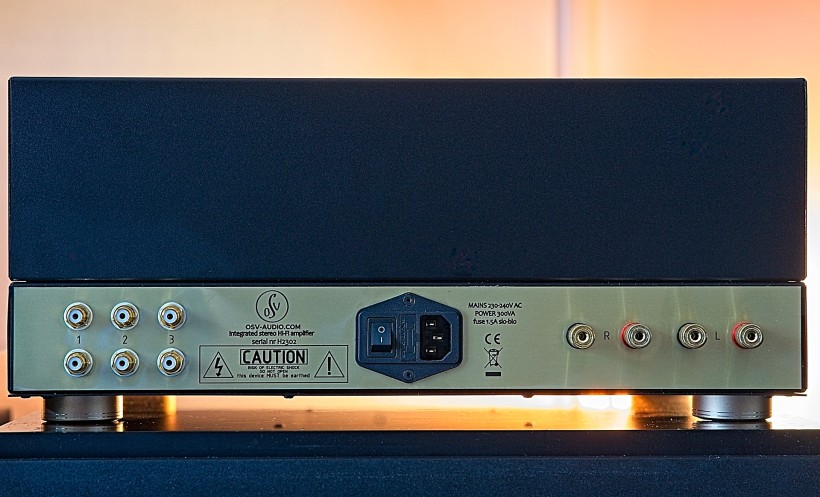
As for the inside, as already mentioned, it is a hybrid stereo integrated amplifier. The preamplifier section operates in Class A, and it is a custom-designed SRPP (shunt-regulated push-pull amplifier) stage that utilizes three tubes. The standard selection includes a single triode, namely JJ’s 6SL7, and two pentodes of the NOS type (new-old-stock) 6J9P-Es. OSV decided to use a motorized Alps potentiometer for volume control, and as a result, the device offers a small and simple remote control for basic operation.
The output stage, on the other hand, is a solid-state design in bipolar configuration working as a current buffer. It operates in Class AB and produces 50W output into 8Ω or 75W into 4Ω. To keep the music as pure as possible designer decided to use only high-quality Jantzen Audio Superior Z-Cap coupling capacitors in the signal’s path. And finally, AC voltage is filtered by a DC blocker to get rid of the unwanted DC component, which could negatively affect the performance of the amplifier.
One more thing. As all tube aficionados well know, using tubes in audio devices (amplifiers, preamplifiers, phono stages, D/A Converters, or others) often gives you some options, or, as some would argue, fun! Tube rolling is what they (or should I say, we) love as it allows us to change the sound of the device (to a point, obviously). In this case, one can replace standard tubes with any compatible ones. Instead the 6SL7 one can use, for example, 6SN7, 6P9S, and the two 6J9P-E can be replaced by 6j52p, 6j9p, e180f, ef86, or 6Z52P. I guess the list can be even longer.
For those who never had any tube devices, let me tell you that tube rolling is really fun, and the input tubes, and that is the case with the HT-50, can quite significantly influence the sound coming from speakers. You need to be aware, though, that if you’re new to it, you should consult preferably the manufacturer, or some experienced tube roller, before replacing stock tubes with any other ones (other types) to make sure they can be used in this particular design. In some cases, the wrong tubes can damage the device. It is definitely worth the effort, as with various tubes you can feel as if you have a different amplifier. That’s something no solid-state competitor can offer.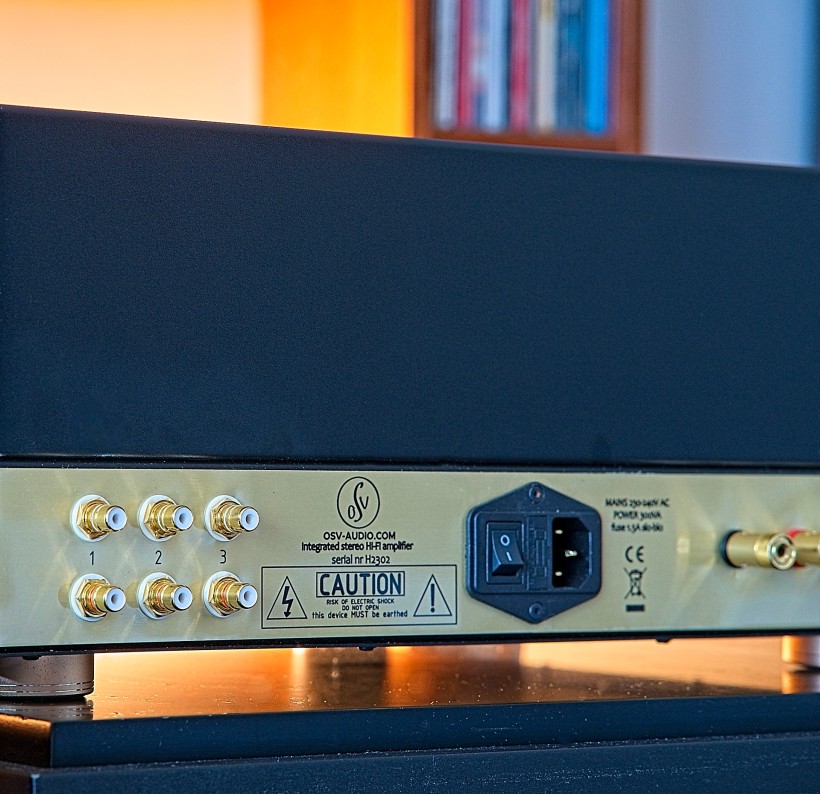
Sound
I should probably skip this part for my own sake, and also because it is not about your regular audio experience, but hey, it did happen, so let me mention it briefly. The very first time I turned the HT-50 on in my system, driving GrandiNote MACH 4 speakers and getting a signal from my ESE Lab Nibiru MC phono stage that in turn was fed from my J.Sikora Standard Max turntable with KV12 Max tonearm and Air Tight PC-3 cartridge, what I heard, to my surprise, was… sound coming only from one channel.
I knew right away what the problem was – the Bastanis Imperial interconnects I used to connect the phono preamplifier with the tested integrated are very stiff. So much so that one has to be extra careful to make sure the connectors sit tightly in the sockets of both connected devices. The best option is to ensure some form of support for the cables at the plugs at both ends, as the cables tend to pull on the sockets a bit too much, and the contact might not be as good as it should be.
I failed to do that properly for one channel in this particular case – my bad, it was late, I was tired, and I screwed up. Anyway, what I heard from one channel stopped me from fixing the issue immediately. Why? First of all, listening to only one channel gives you a different perspective on the presentation as you hear only a part, not all of it (the right and left channels in stereo recordings are not identical!). In this case, though, what caught my attention was this significant contrast, enhanced by a single channel playing, compared to my Class A integrated, GrandiNote Shinai that I’d listened to just minutes before.
I love my Italian amp for its warm, rich, deep sound, and the OSV HT-50 in contrast delivered an amazing clarity, transparency, openness, and also crispness of the upper half of the range. Not that Shinai lacked in either, but, again, also because of just one channel playing, the difference was significant and the presentation had sort of ‘lightness’ to it that would be probably irritating in the long run, but was interesting at first as it enhanced the aforementioned qualities. Also, it showed me that these were inherent components of the HT-50’s presentation. So this accidental first impression resulting from my mistake set, at least to a point, my expectations going forward for the tested amplifier.
Just a few minutes after absorbing this amazing clarity and transparency of the sound (partially a result of its lack in terms of richness, of fill-in) I fixed the connection for the other channel but instead of turning the system off and going to bed, as planned, I just had to continue the session to learn what the OSV amplifier had to offer for real. In other words, my mistake inspired me to start the unplanned late-night session. Once I did, I may add, I didn’t feel like ending it any time soon, so I played track after track, figuring out the actual HT-50’s sonic character, at least in those conditions.
By conditions, I mean that the time of the day dictated both the ‘light and relaxed’ repertoire and low volume level, hence I focused on acoustic music by artists such as, for example, Hadouk Trio, Ahmad Jamal, and Michał Salamon. The sound played now in both channels filled in significantly, got richer, fuller, and also more full-range (it’s an advantage of high-sensitivity speakers and proper amplifier driving them – even at low levels, you don’t lose much of the band’s extension or rather details in the lower and upper regions). It didn’t quite reach my Shinai’s density and warmth, but it came close enough, in return to offer a slight edge in terms of transparency, clarity, and an even touch faster impulse response.
Despite the low-level listening, the presentation was impressively resolving, teeming with details enriching the beautifully coherent, and natural-sounding music. The latter two features already started to feel like a trademark for the tested device. Obviously, the credit for sounding so well during the late-night session the HT-50 shared with my MACH 4 speakers, but I also knew from experience that not all the amplifiers driving them had offered equally good results. Long story short, as far as the first impression goes, the OSV’s contender left a really good one. Still, I planned to verify it the next day (and the following ones)!
The next morning, at my (!) regular volume level (which is still not particularly high, as others who visited my room repeatedly pointed out), I played Michał Salamon’s live performance recorded in Warsaw’s Jassmine Club once more. I discovered this album a while back and was quite impressed with the recording’s quality, the engaging music, and the excellent performance, as well as the beautifully captured, very moody atmosphere of the event. Yes, I admit, in real life, concerts taking place in small venues belong to my favorites, and so do recordings of such events (the well-captured ones, obviously). It also means that I’m not that easy to please when it comes to them.
It is also true that if I were to choose one type of amplifier to play such recordings, it would be a classy SET (single-ended triode). They are famous for particularly spacious, palpable, highly expressive, natural sounding, rich presentations, hence conveying not only the music but the vibe of a live event, and all the emotions best. You don’t have to agree, to be clear, but I concur with this opinion. And yet, OSV HT-50 with its truly open, spacious, lively, energetic, but also smooth presentation fit right into my expectations. To be honest, in a blind test, I would have most likely bet I was listening to a tube amplifier. I mean a pure tube one, maybe even one in a single-ended configuration, and not a hybrid specimen with ‘only’ input stage featuring tubes (and not even all of them triodes), and actually transistors driving the speakers.
The point is that tubes exhibit the ability to render three-dimensional, palpable, almost present sources in a way that solid-state technology can’t, not really (again, I am not trying to start tube vs transistor war here – that’s just my experience). And yet, in this particular case, the combination of the best qualities of both technologies resulted in a very similar effect. Yes, I realize I’m a space/palpability/presence junky, which is not true at all for many other music lovers, so you may not care about it as much as I did. Still, for me, as a person who tries to re-create the feeling of being at a concert and witnessing ‘live’ music in my room, these aspects of the presentation are particularly important. So let me emphasize once more that OSV HT-50 excelled in terms of spatial presentation and imaging, so much so that even a SET fan like myself felt pretty satisfied.
After Salamon’s, even more live albums followed. The tested amplifier not only conveyed the vibe and atmosphere of each of those events in a very natural and convincing way, but it also nicely differentiated them. And so the Green Mills, where Patricia Barber performed on her album ‘sounded’ quite different from the Checkerboard Lounge, where Muddy Waters played with a star-filled blues lineup only to be joined at some point by Mick Jagger and other members of The Rolling Stones. Later, with the famous „Jazz At The Pawnshop” there was no doubt in my mind that it was recorded inside yet another, different space, with a bit less eager, a bit less involved, or just calmer (Swedish) audience than in the other (American) venues, but one still active enough to be an important part of the show.
Michel Godard’s choice of the Abbaye de Noirlac for a recording space for „Monteverdi: A Trace of Grace” on the other hand, showcased the OSV amplifier’s ability to render a huge space as convincingly as that of small music clubs. The size did not seem to affect the precision, as all the phantom images were anchored within particular places in the space. Each of the widely spread instruments had a palpable body and was surrounded by lots of air, thus enhancing the impression of a huge, open space. They all interacted with each other and the environment of the venue, which contributed to a stunning final spatial effect.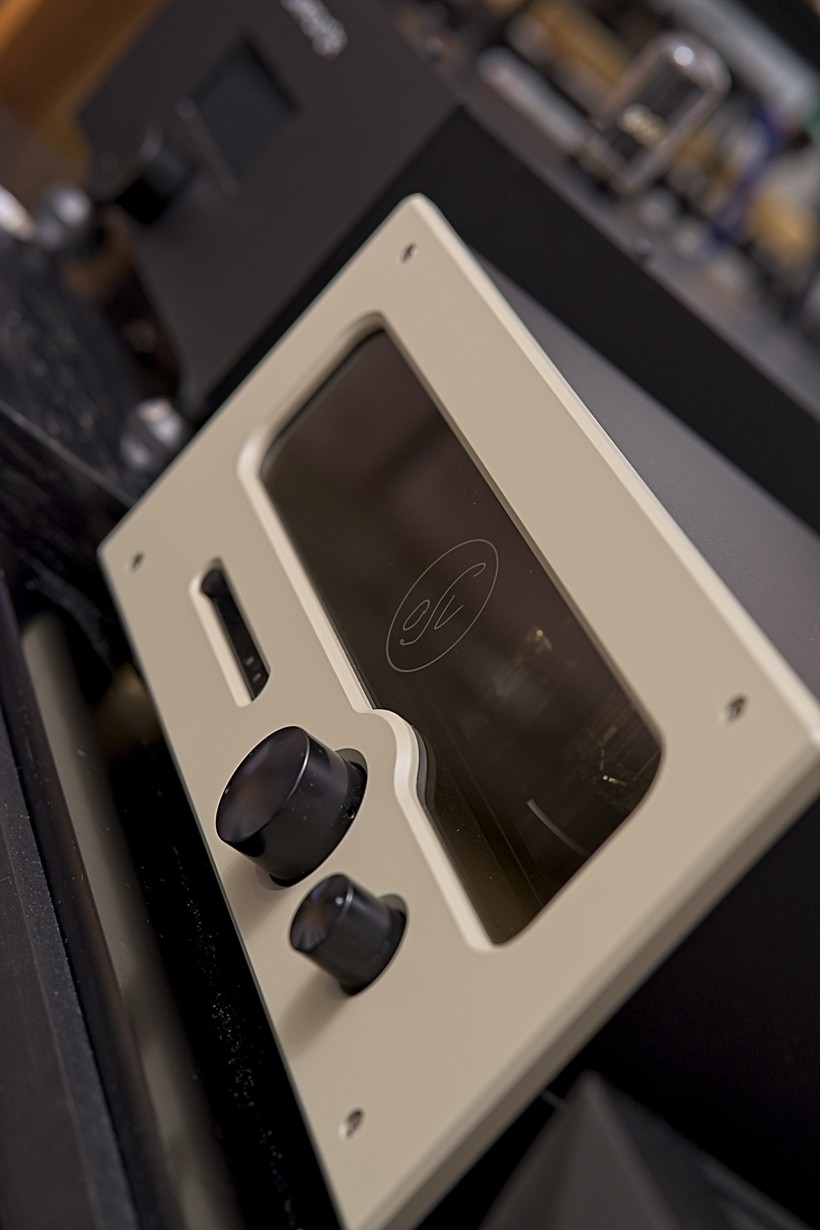
The Noirlac Abbey, being the largest venue, was naturally the most impressive one, as the soundstage seemed to extend almost indefinitely (in its depth), with sound reflections bouncing off the walls and pillars placed dozens of meters behind the speakers. The mix of jazz and period instruments was beautifully conveyed by the HT-50 with all their tonal and timbral contrasts, wide dynamic range, and a myriad of intricate details that the amplifier under review so precisely and clearly presented, once again proving the ingenuity of the idea for the album (and the tested design as well).
It’s not as easy as some seem to think to compare components listened to months or even years apart (or the impressions music played by them left), and yet I’ll risk a claim that I liked even more the presentation of this particular album only a handful of times before. In most, if not all, cases, I played it using significantly more expensive purely tube SET amplifiers. In other words, for the price, but even if we forget about it, OSV HT-50 delivered excellent performance!
Later, OSV HT-50 did an equally good job when presenting another of my favorites, namely a production of „Carmen” with Leontyne Price in the lead role. It was rendered very convincingly as if a huge, huge space actually opened in front of me. The amplifier (benefiting from the recording, obviously) filled it with the sounds of orchestra, soloists, and choirs. I like to use this album in my tests as it shows how well the assessed component presents not only what’s happening in front of the stage, but also the events that happen way deeper on it, as if dozens of meters behind the singers.
HT-50 did a really good job at that. It precisely showed the singers moving around in the foreground without losing focus even for a second, as well as the choirs marching far behind them. Every aspect of their performance, the timbre of each voice, harmony and power of the choir, the so important drama element of the performance, the pace, the rhythm, and the power of the orchestra – it all came together beautifully and naturally reminding me once more what makes this particular album so unique, and the performance if presented the right way, as the HT-50 did, so engaging.
The reviewed OSV contender presented all those albums (and more), regardless of the genre, in such a natural, accurate, energetic, and at the same time sort of relaxed way, that it felt as if it were the easiest task possible. Importantly, it also proved its class by differentiating each recording not only in terms of sound quality and general sonic character, but also rendering of the acoustic environment, depth and width of the soundstage, reverb, energy of the performance, the vibe, and so on. It’s by no means a cheap amplifier, but it’s not super-expensive either, so it was somewhat unexpected to hear such a good differentiation with it.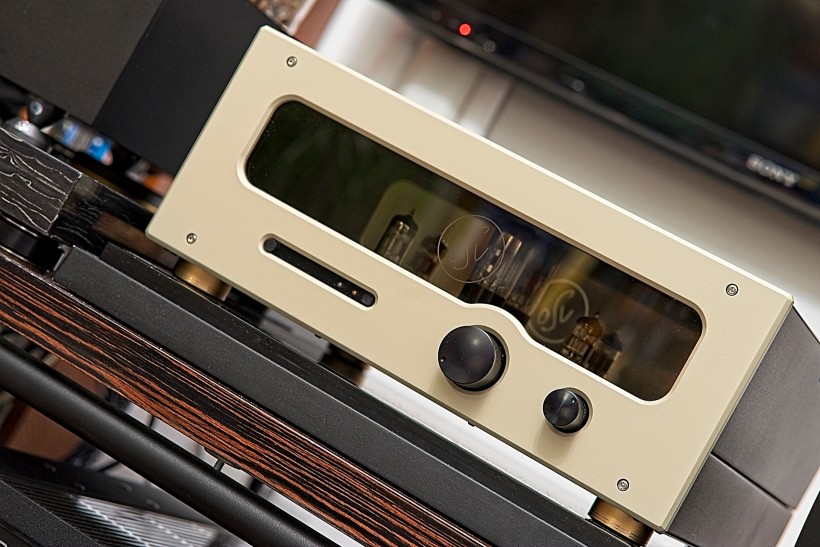
Listening to other live albums, the ones with their spatial limits (or smaller size venues), with closer, shorter reverb, crowded stages, and with the presence of an audience getting involved with the musicians, was in no way less interesting. It allowed me to appreciate a more intimate and, as a result, immersive atmosphere. It became even clearer to me that the amplifier’s ability to differentiate the presentation, combined with the already mentioned good resolution, allows it to accurately deliver intricate details of each performance, thus further enriching the musical experience and bringing it a step closer to that of an actual attendance.
Ultimately, even such a ‘concert junky’ as myself had to move on to other studio recordings, though. One of them was, I believe, the most popular jazz album ever, Miles Davis’ „Kind Of Blue”. By that time, I also ‘upgraded’ my analog rig with reviewed loaners, namely the DS Audio Master 3 system (cartridge + phono stage) that replaced my reference Air Tight PC-3 and GrandiNote Celio MK IV. DS Audio set is a story for another time (or the review for HighFidelity.pl that I’ve been preparing), but let me just say that its performance is stunning! By the way, the analog front end ‘enriched’ with these loaners was worth roughly 10 times more than the tested amplifier. In other words, it was the OSV HT-50 that, at least on paper, was the bottleneck of the whole setup. Yet, it wasn’t easy to tell when listening to the music. Replacing it with twice as expensive GrandiNote Shinai made some small difference, and only more than 3 times more expensive Soul Note A-3 made the differences easier to spot. So, kudos to HT-50 as it seemed to punch way above its weight. But I digress.
Back to the point, then. Miles’ trumpet was crisp, powerful, rich, and yet gentle, piercing at times, smooth as silk at others, lively and clear, or a bit ‘smokey’ or dampened. At all times, though, it was moody or blue if you will, and it was contagious (the atmosphere or mood, I mean). The OSV amplifier effortlessly, or so it seemed to me, conveyed all the intricacies of Miles’ but also Adderley’s and Coltrane’s and other musicians’ performances, turning the playback into something more, a touching, deeply involving experience. I don’t know about you, but that’s how I like my music served – rich with information, served with clarity (as much as a recording allows it), but also filled with emotions and feelings. HT-50 delivered on all fronts.
Listening to the Isao Suzuki Trio’s „Blow Up” album, I waited for the maestro’s double bass to enter. The lowest, weighted extension captured particularly well in the „Aquamarine” track is something else. When played properly, one can feel the lowest notes deep in one’s guts and bones. Despite MACH 4 not being particularly large speakers and not featuring large woofers, driven by the reviewed amplifier, they were still capable of giving me a pretty good idea about how deep and mighty the bass notes on this track were. It seemed to me that the limitation at the very lowest end that I heard had to be credited to the speakers, not the amplifier.
A short listening session with HT-50 driving my other speakers, Ubiq Audio Model One Duelund Edition, carried out later, proved me right. It seemed that driving even those larger speakers, with their 12-inch woofers, was an easy job for the OSV amplifier. The performance stayed effortless, with no signs of strain or compression, and its clarity and precision did not change either. It did, at least when the track demanded it, sound more powerful, delivering proper slam when needed, and keeping a really good control over the woofers (and the other drivers).
Encouraged by the previous experience, at some point I reached for another beautiful Miles Davis album (this time played from files, though) that I hadn’t listened to for a long, long time, namely „In A Silent Way”. On one hand, the noise (the source of which was the tape it was recorded on) was very obvious from the start, but on the other, it was sort of an expected and natural component of the recording, hence I didn’t really pay attention to it because HT-50 didn’t make me to. Or maybe it did, but for like 15 seconds, and then it let it ‘disappear’ into the background, shifting my attention to the music.
Miles stepped into the spotlight with his trumpet, and the magic began again. For the sound was amazingly natural, soft and warm when needed, piercing, almost sharp at other times. Never aggressive or unpleasant, though. With the lights dimmed in my room, it felt almost as if he and his band were there, in front of me, almost within reach, with good dynamics and musical energy level, which translated into a particularly close, intimate, totally immersive experience that I loved.
Michael Hedges, with his „Aerial Boundaries”, showcased all of his mastery, the deep, crisp, and on top of that also intense sound of his guitar, thus proving how good the OSV was in conveying the very close to my heart sound of this instrument. All the intricate details, fingers sliding along the strings, plucking them with proper speed and intensity, the guitar harmonics, powerful chords, and gentle strumming, drumming on the guitar’s body (with deep ‘woody’ response), all that sounded realistic to my, once (long, long time ago) amateur guitar player’s ears.
The tested amplifier played the acoustic guitar in a way that (again) reminded me of some excellent tube (SET to be exact) amplifiers, with the richness and depth of the sound, with abundance of harmonics, with a beautiful timbre, with it being presented in such a palpable way that it allowed me to (almost) see the artist and his instrument just a few meters away from me. The sound was very open, effortless, lively, agile, and completely fatigue-free. I kept listening to Michael’s albums for a few hours straight, and I didn’t have enough. His guitar felt so… right, that I couldn’t help myself and kept adding more of his albums just for the pure pleasure of listening to them presented in such a lovely, but also accurate way. Isn’t it what any audio component and the whole setup should offer us? I believe it is!
Later, OSV HT-50 got a chance to show me its other, rougher, more aggressive (in a good way), highly dynamic, and energetic side when I played Allan Holdsworth’s „All Night Wrong” album or Black Country Communion’s „V”. There is plenty of electric guitar riffs, there is a lot of powerful drums, and fast pace, slam, and dynamics is incredible, and the way HT-50 delivered all that reminded me more of some excellent, high-output solid-state than a hybrid or tube design outputting ‘only’ 50W. Mind you, I wrote „more of”, because there are some excellent hybrid and tube amplifiers that, when properly paired with speakers, can match many solid states even when playing rock music.
For me, tubes even help with some aspects of electric guitar-based music, because it is mostly about midrange, and tubes are masters thereof. They add more fill and necessary warmth that removes the more ‘technical’ aspects of the sound of this (amplified) instrument, and the results can be remarkable. That was the case with the OSV’s integrated. It kept the pace and rhythm intact, the timing was another feature that I could not complain about, and the sound was rich and coherent, allowing me to fully enjoy also this kind of music.
Summary
The grass is always greener on the other side of the fence, as they say. Just a few weeks ago, I didn’t even know the OSV brand existed in ‘my backyard’, and so I wouldn’t recommend it to anyone asking for a good hybrid, or just any amplifier. Today, the HT-50 hybrid integrated has become one of my favorites. Not because it is the best amplifier I’ve ever tested or listened to, but rather because, when compared to other similarly priced competitors, regardless of whether tube or solid-state-based, it is one hell of an amp that outperforms most of those I know, and some more expensive ones too!
When I hear the term hybrid design, I think about some really good ones, such as my Circle Lab M200 from a similar price range, or products by Pathos, but also some absolute top performers, such as ones by Tenor Audio. They all skillfully combine the advantages of both technologies, tube and solid-state. I did experience some that were not particularly impressive, too. The key to such design is to benefit from the best qualities of both solutions – power, energy, slam, transparency, and ability to drive difficult loads of transistors, and the refinement, richness, natural warmth, smoothness, and spatial aspects of the presentation, that tubes have to offer, and combine them smoothly into a performance that gets rid of the downsides of both technologies. The OSV engineers managed to do just that, and the result is highly impressive, especially considering the HT-50’s price point. As always, don’t believe me, try it out yourself – it will be worth it, I am sure of it!
Price (when reviewed):
- OSV HT-50: 7.760 EUR
Manufacturer: OSV AUDIO
Technical specifications (according to the manufacturer):
- Type: Hybrid stereo amplifier. Preamplifier stage: tubes, class A, 1 x JJ 6SL7, 2x NOS 6J9P-E
- Final stage: Bipolar configuration, class AB
- Preamp: custom-designed SRPP stage
- High-end coupling capacitors Jantzen Audio Superior Z-Cap
- AC voltage filtered by a DC blocker for the best performance
- Output: 2 x 50WRMS @ 8 Ω, 2 x 75WRMS @ 4 Ω
- Max input voltage: 5V RMS
- Input sensitivity: 0,7VRMS
- Input impedance: 50K
- Analog inputs: 3 unbalanced RCA line
- Optional input: Bluetooth
- Dimensions: 430mm (D) x 435mm (W) x 185mm (H)
- Weight: 15 kg
Associated equipment:
- Digital source: a custom passive server with WIN10, Roon, Fidelizer Pro 7.10, JCAT NET XE, and JCAT USB XE cards with FERRUM HYPSOS Signature power supply, KECES P8 (mono) linear power supply for the server, JCAT USB Isolator
- D/A Converter: LampizatOr Pacific 2 +Ideon Audio 3R Master Time (USB signal regenerator)
- Analog front end: J.Sikora Standard MAX turntable, J.Sikora KV12 & J.Sikora KV12 MAX tonearms, AirTight PC-3, Audio Technica PTG33 Prestige & LE SON LS10 MKII cartridges, Grandinote Celio MK IV & ESE Lab Nibiru V 5 phono stages.
- Power amplifiers: GrandiNote Shinai, Circle Labs M200, Art Audio Symphony II (modified)
- Preamplifier: Circle Labs P300
- Loudspeakers: GrandiNote MACH4, Ubiq Audio Model ONE Duelund Edition.
- Interconnects: Bastanis Imperial x2, Soyaton Benchmark, Hijiri Million, Hijiri HCI-20, TelluriumQ Ultra Black, KBL Sound Himalaya 2 XLR, David Laboga Expression Emerald USB, David Laboga Digital Sound Wave Sapphire Ethernet
- Speaker cables: Soyaton Benchmark Mk2
- Power cables: DL Custom Audio 3D-S-AC Connect, LessLoss DFPC Signature, Gigawatt LC-3
- Power: Gigawatt PF-2 MK2 and Gigawatt PC-3 SE Evo+; a custom power line with Gigawatt LC-Y in-wall cable; Gigawatt G-044 Schuko and Furutech FT-SWS-D (R)
- Network: Silent Angel Bonn N8 + Silent Angel Forester F1 + optical LAN isolator
- Racks: Base VI, Rogoz Audio 3RP3/BBS
- Anti-vibration accessories: ROGOZ-AUDIO SMO40 and CPPB16 platforms and ROGOZ AUDIO BW40MKII feet, OMEX Symphony 3S, Franc Accessories Ceramic Disc Slim Feet and Wood Block Platform, Graphite Audio CIS-35 and IC-35 Premium


